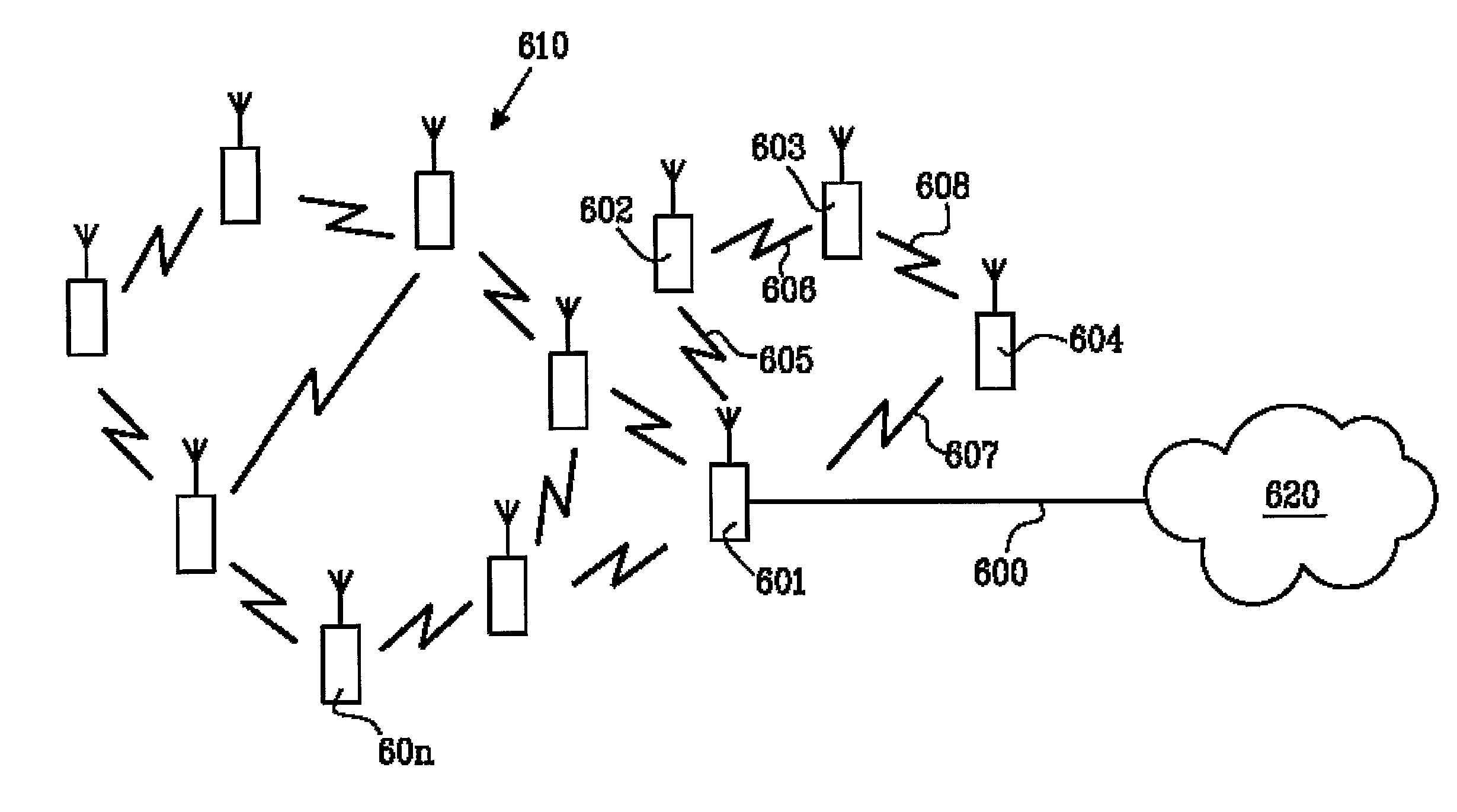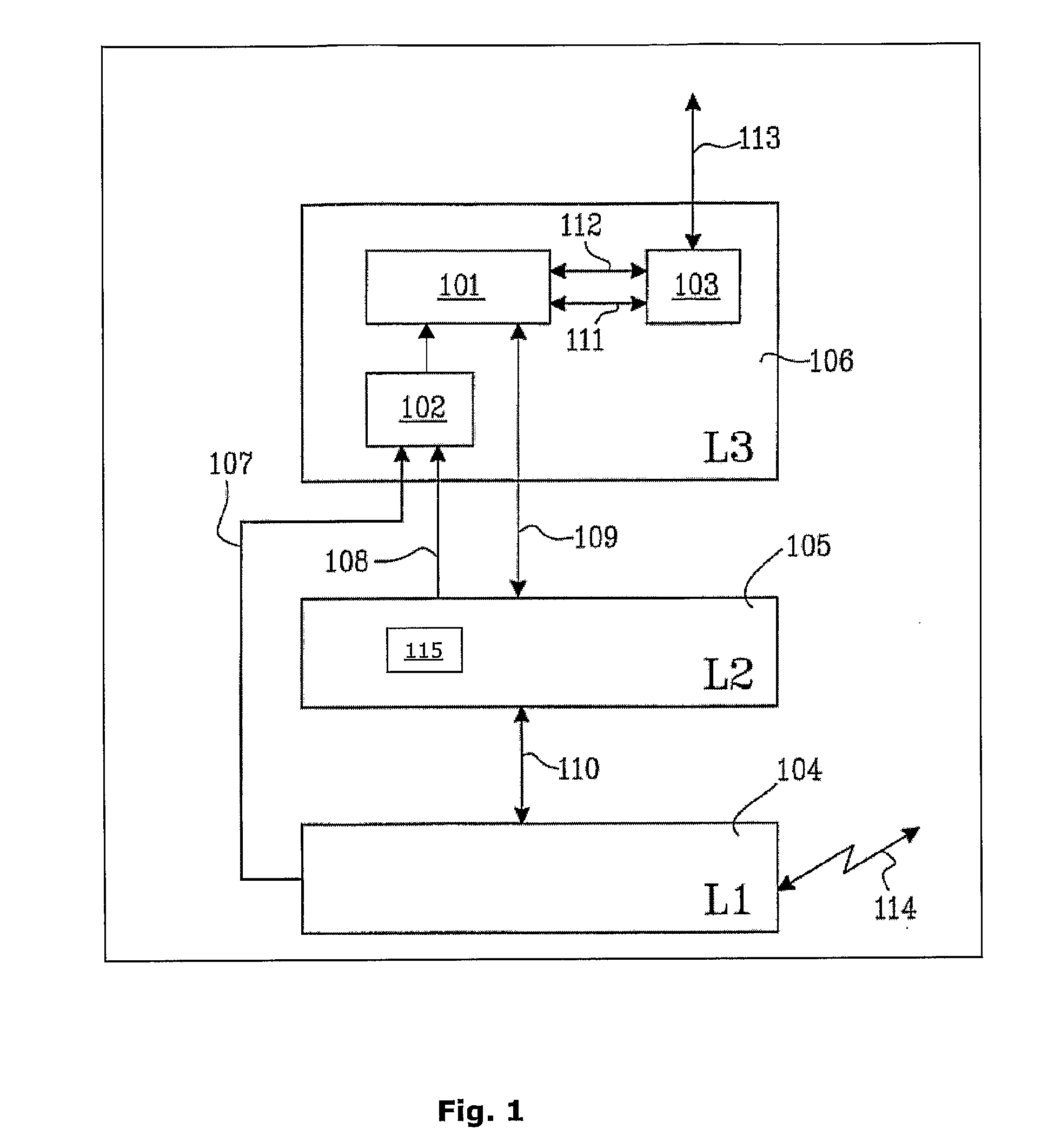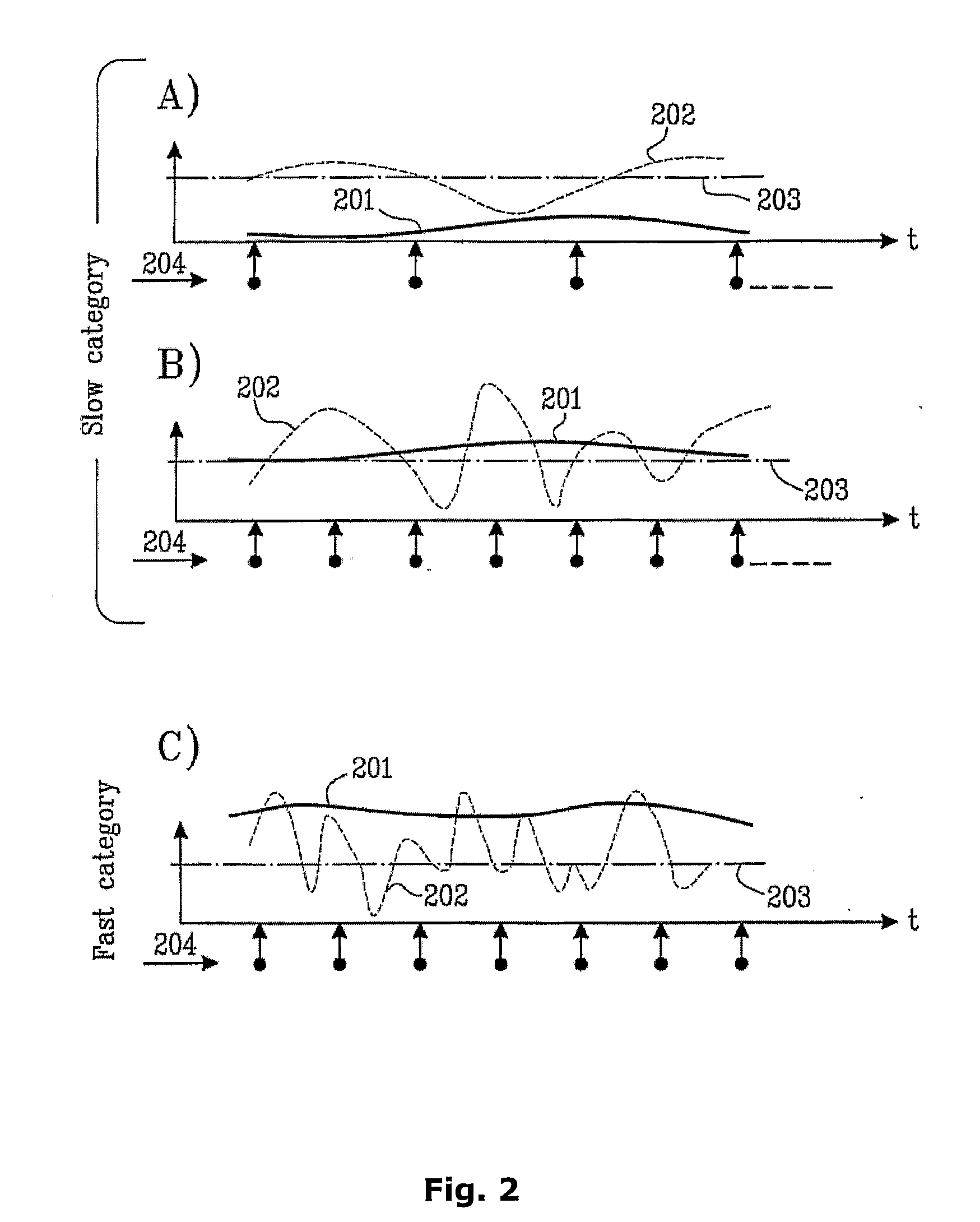Method and System for Efficient Routing in Ad Hoc Networks
a routing system and ad hoc technology, applied in the field of routing system, method and apparatus, can solve the problems of not being able to adapt to the rapidly changing network topographies, nodes will be installed or disconnected in an uncontrolled manner, and imposing very high demands on routing protocols
- Summary
- Abstract
- Description
- Claims
- Application Information
AI Technical Summary
Benefits of technology
Problems solved by technology
Method used
Image
Examples
Embodiment Construction
[0064] In FIG. 6, the basic concept of a mobile multiple hop wireless ad hoc network of the present invention is shown. A plurality of nodes or infrastructure elements 601, 602, 603, 604 . . . 60n builds up an ad hoc network 610 together by communicating with each other and forwarding data traffic and control traffic for each other, in order to maintain the network traffic between the communicating end nodes and intermediate nodes. Sometimes one or several gateways 601 are present in an ad hoc network 610. This gateway 601 acts as a link between for example a wireless ad hoc network 610 and a standard fixed IP network 620 (e.g. Internet). The connection 600 to the standard IP network may be either a fixed line, using for example an Ethernet network, or a fixed wireless connection using for example LMDS or “Minilink” systems or similar technology.
[0065] Not shown explicitly in FIG. 6 are client / end user terminals that may communicate via these infrastructure nodes 601, 602, 603, 604...
PUM
 Login to View More
Login to View More Abstract
Description
Claims
Application Information
 Login to View More
Login to View More - Generate Ideas
- Intellectual Property
- Life Sciences
- Materials
- Tech Scout
- Unparalleled Data Quality
- Higher Quality Content
- 60% Fewer Hallucinations
Browse by: Latest US Patents, China's latest patents, Technical Efficacy Thesaurus, Application Domain, Technology Topic, Popular Technical Reports.
© 2025 PatSnap. All rights reserved.Legal|Privacy policy|Modern Slavery Act Transparency Statement|Sitemap|About US| Contact US: help@patsnap.com



